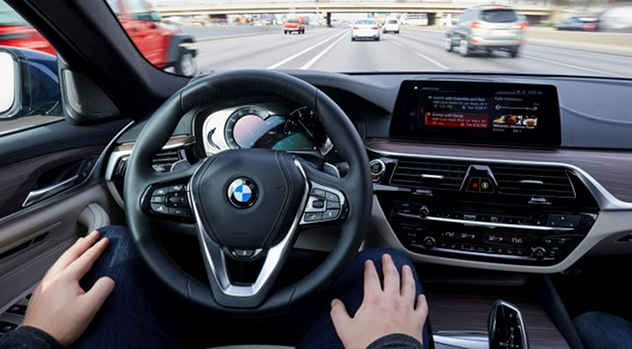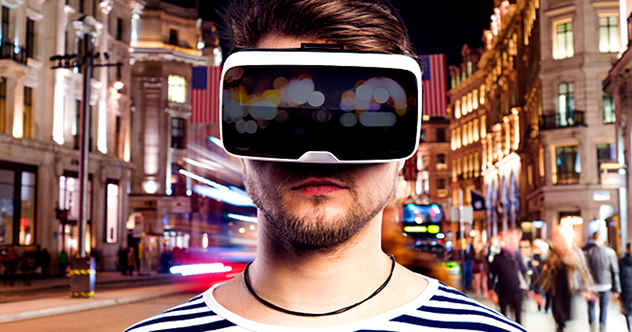 Music
Music  Music
Music  History
History 10 Less Than Jolly Events That Occurred on December 25
 Weird Stuff
Weird Stuff 10 Funny Ways That Researchers Overthink Christmas
 Politics
Politics 10 Political Scandals That Sent Crowds Into the Streets
 Weird Stuff
Weird Stuff Ten Bizarre Facts About The Doge Meme
 Our World
Our World 10 Ways Your Christmas Tree Is More Lit Than You Think
 Movies and TV
Movies and TV The 10 Coolest Stars to Set Sail on The Love Boat
 History
History 10 Things You Didn’t Know About the American National Anthem
 Technology
Technology Top 10 Everyday Tech Buzzwords That Hide a Darker Past
 Humans
Humans 10 Everyday Human Behaviors That Are Actually Survival Instincts
 Music
Music 10 Surprising Origin Stories of Your Favorite Holiday Songs
 History
History 10 Less Than Jolly Events That Occurred on December 25
 Weird Stuff
Weird Stuff 10 Funny Ways That Researchers Overthink Christmas
Who's Behind Listverse?

Jamie Frater
Head Editor
Jamie founded Listverse due to an insatiable desire to share fascinating, obscure, and bizarre facts. He has been a guest speaker on numerous national radio and television stations and is a five time published author.
More About Us Politics
Politics 10 Political Scandals That Sent Crowds Into the Streets
 Weird Stuff
Weird Stuff Ten Bizarre Facts About The Doge Meme
 Our World
Our World 10 Ways Your Christmas Tree Is More Lit Than You Think
 Movies and TV
Movies and TV The 10 Coolest Stars to Set Sail on The Love Boat
 History
History 10 Things You Didn’t Know About the American National Anthem
 Technology
Technology Top 10 Everyday Tech Buzzwords That Hide a Darker Past
 Humans
Humans 10 Everyday Human Behaviors That Are Actually Survival Instincts
10 Unintended Side Effects Of Newly Emerging Technologies
Technology is advancing at a rapid pace, and most people are excited about all the crazy things that are coming up next. Scientists and industry leaders want to bring us driverless cars, more immersive virtual reality, incredibly fast travel, commercial space flight, and so much more.
However, while everyone looks forward to all the crazy things that are being developed, few people are stopping to ask why. The truth is that many of these technologies are completely unnecessary, and in some cases incredibly dangerous. Emerging technologies could not only prove to complicate modern life but could actually cause more problems than they solve.
10Driverless Cars Have Unaddressed Ethical Concerns

Driverless cars, in many people’s eyes, are the next big wave of the future. We didn’t get our flying cars, but at least we will get ones that we won’t actually have to drive anymore—at least that is the thinking many people and a growing number of companies beyond Google now have. However, there are also issues surrounding self-driving cars that need to be addressed before they can become a huge market dominator and start to eat into the market share of regular cars, much less get onto the market at all.
Apart from making sure they are safe in the first place and work properly; there are also ethical issues. The question many people ask is what decision the car should be programmed to make if it has a choice between the lives of innocent civilians and the lives of those in the car. In a research study published in Science Magazine, that had almost 2,000 respondents, they found that while people thought the car should be programmed to protect civilians, they also did not want to buy a car that would prioritize the safety of civilians over their own safety.[1]
This conundrum could make it very difficult for self-driving cars to ever catch on in a big way. However, some experts believe this is not really as big a concern as some people feel, and that the bigger issue is protecting them from hackers who could remotely gain access to a car and cause horrible damage and destruction on the road.
9Virtual Reality Could Lead to Psychological Disorders

Virtual reality is a quickly emerging field. Companies like Oculus Rift are making a big splash in the gaming world, and it is starting to make waves in the medical field as a great way to teach doctors and nurses new things without the real life risk. As technology advances, it will only become even more immersive, and in some ways, this can be a good thing. With VR being great for many important applications like in the medical field, and not just for video games, the more interactive and immersive the better.
However, when it comes to gaming specifically, we could end up with all kinds of psychological disorders and issues of people neglecting their own health. Even today, without virtual reality, some people have died while gaming for too long at once.[2] Others have managed to ruin their lives due to addiction problems with games like World of Warcraft. When people can get a truly full immersion, some will find it very hard to leave, and could seriously neglect their health. They could also easily lose touch with reality, to the point that they no longer understand the difference between the games they play and real life.
8Drone Use Is Driving Citizens Mad

Drones are becoming more and more common, and soon we may have to deal with them as a regular part of civilian life. At first, drones were only giant planes that soared through war zones far away, dropping bombs on people in other countries. However, now little aerial drones that people can buy at the store for hobby use are reaching a height of popularity, and Amazon has talked about plans to work on drone delivery of their products. Before long, we could have drones delivering goods, monitoring areas for police, and all kinds of different functions, all over the sky, at all times. Buzzing around over our heads, and driving us crazy.
As you may have noticed, commercial drones that you can buy at a store often make at least a small buzzing sound, and the larger the drone, the larger the sound. In villages in Yemen where they deal with constant drones overhead, one of the major complaints that citizens claim is helping drive them to madness is the near constant buzzing sound they hear overhead[3]—which we could imagine would drive almost anyone to distraction. Unfortunately, if drone delivery and other such things become normal, we could have drones buzzing all around our cities, day and night—never ceasing, always watching.
7Wind and Solar Farms Are Killing Wildlife

Solar and wind power plants are today considered by many environmentalists and experts as one of the best ways to move forward with power technology. They are much cleaner for the environment, and they are sustainable, as wind and the sun are not going away without taking everything with them. However, just because they are much cleaner than coal, for example, and have sustainability as an advantage, does not mean that they are without flaws.
While you would think that environmentalists would be the biggest fans of wind and solar, conservationists are actually some of the people most concerned with slowing the growth of these plants, and they are asking companies to spend more time first looking into the environmental impact and finding solutions. The problem is that wind and solar farms can kill a lot of wildlife, especially birds. While studies seem to suggest that wind power kills less wildlife than coal, it still kills a lot of birds, and the numbers on solar are not well studied yet. The issue with solar is that birds will see the field of solar power arrays and think it is a lake; they will fly toward it and basically ignite in midair.[4] Many solutions have been attempted and suggested, but no one has yet found an effective way to avoid the problem universally or with any real confidence.
6Commercial Space Flight has Health Issues

Space travel was once restricted to a few government super powers, but now multiple countries have made it into space, many countries have launched their own satellites, and private companies have been getting in on the action. Companies like Virgin Galactic have had some setbacks, but are still working at it, and Elon Musk’s SpaceX has already delivered cargo to space. In the near future, he hopes to first take up astronauts and then take civilians up into space as well. However, while almost anyone would love the idea of taking a brief vacation into space, and the idea sounds neat, there are some complications that may need to be addressed.
The problem is that being in space is simply not good for your health. The reason NASA only accepts the most physically fit people possible is that space flight is incredibly taxing on the human body—their astronauts are only allowed to be in space for a maximum of six months at a time. Time in space can decrease your bone density,[5] permanently decrease your vision, and cause many other health problems as well. NASA and other experts are worried that fragile, older tourists with health problems could have potential complications or get very sick during a trip into space.
5Rapid Industrialization Has Created Global Noise Pollution

Humanity has industrialized rapidly in the last couple of hundred years or so, and now the face of the globe is very different from what it once was. Shipping things used to take much longer before airplanes became such an integral part of life, but now with advanced train routes, modern freeways, and the aforementioned airplanes, trade can occur at an incredible speed all around the world. This, of course, means fewer people in the world go without, which is good, but it has also harmed our environment in ways many people do not even think about.
Some people like to decry the physical side of industrial pollution, such as chemicals, but many people forget about pollution such as light or sound pollution. When you think about it, just a couple of hundred years ago, the vast majority of man made noise simply did not exist. There were no airplanes, no major power plants or industrial plants, or radios, or other such devices being used. Things were clear and silent, and activity even in a busy town would often mostly shut down at night. You could find many areas truly free of human noise. However, now it is almost impossible.
Some dedicated individuals have gone to great lengths to find places, outside of caves deep below ground, that are free of man-made noise, and none are ever free of such noise for any real length of time. One non-profit called “One Square Inch” hopes to make certain national parks in the United States dedicated no-fly zones,[6] so they will be free of the sound of planes overhead, and provide a few small areas free of noise pollution.
4The Hyperloop Project Could Have Health Consequences

Elon Musk is a very ambitious individual—he has not only worked on electric cars, but he constantly warns people about the dangers of artificial intelligence. He is working on solar power, has his own space flight company, and wants to make a giant tube from Los Angeles to San Francisco that can shoot people across the United States at a truly horrifying speed of roughly 800 miles per hour (1300 km/h).[7] This would operate somewhat similar to a maglev train, but Musk thinks he is improving the concept by putting it inside a vacuum tube, thus taking away any air resistance and going way, way faster.
However, while it sounds really cool on paper, especially because it would outpace a commercial aircraft, some have taken issue with the idea. The major problem is that humans simply may not be able to take such a ridiculous speed, even in a perfectly straight line. And even getting it to be a truly straight line would be almost impossible, due to so many geological imperfections in the earth. Also, any slight bump, or glitch, or any issue with the vacuum would likely be instantly catastrophic, as an accident at 800 miles per hour really doesn’t give you any time to react. Musk also proposed only five miles (eight km) between each car to make maximum use of the tube, but according to Forbes, this would give the pods inside the tube only about a four-second gap. While it sounds like a neat idea, it may be a better proposal for quickly moving cargo than for quickly moving people—time will tell if he ever manages to start work on it.
33D Printers Pose an Environmental Hazard

3D printers have been touted for years now as the wave of the future, and yet they still don’t seem to have caught on much. This is probably partly because the technology is still fairly expensive, and somewhat in the prototype phase at this point. No one has really figured out a way to market it to consumers as anything more than a novelty, and in terms of industrial use, many companies are still testing the best ways to take advantage of these machines. However, it is likely only a matter of time until 3D printers become more accessible to consumers, and start to have more home applications. As we get closer to that point, we may have to also deal with the environmental risks associated with 3D printers.
There are two issues with them right now, and the first involves emissions. Studies have shown that home 3D printers give off about the same emissions per amount of use as burning a cigarette, although one shouldn’t be too alarmed, as this is also about the same amount as the equivalent use of a gas stove—it is still troublesome though, and could definitely use improvement.
The second issue is that most 3D printers use a cheap plastic filament that is not biodegradable and is very bad for the environment,[8] filling up landfills and going against the green movement to stop using so much plastic. While these issues may be worked out before 3D printers become widespread, it is certainly something to keep in mind as their popularity and use grows.
2Toy Lasers Can Blind Pilots

Laser technology has increased so much that we can now have lasers in the palm of our hands. Fun, geeky sites on the internet sell cheap lasers that can go ridiculous distances and have incredible power. For many technology lovers, or anyone who thinks lasers are cool, this is a dream come true. Many people get them as presents or give them to kids, but the problem is that they really are not a toy, and can be incredibly dangerous. To begin with, kids have blinded themselves or each other—or at least permanently damaged their vision—by flashing lasers in each other’s eyes, but their reach can extend much farther than that.
Many people, whether out of ignorance or maliciousness, have been pointing lasers up at airplanes. Many people may just be trying to see the plane better or something, but they are often causing serious harm. These lasers can extend up far enough to reach the cockpit of planes, depending on how high they are, and they can blind the pilots,[9] making it difficult for them to land. Worse yet, it can be a career ender, because if a pilot looks at the laser glare for too long, they could permanently lose vision—and even just partial vision loss can mean the end of flying planes. Pointing lasers at planes is a federal offense in the United States, and surely illegal in most other countries as well—lasers should never be pointed at cars, planes, people’s faces, or anything similar.
1The Internet Creates an Echo Chamber of Affirmation for Evil or Demented People

The internet has transformed the world in a very short amount of time. Now we can get up in the morning and, without getting out of bed, find out the latest in countries on the other side of the world. Everyone is more connected than ever before, and almost any information you could imagine or want is right at your fingertips. Knowledge has never been easier to acquire, and getting people together has never been easier. However, while in many ways this has been a great thing, the vast compendium of knowledge that is the web, as well as the incredible connectivity, can also have its downsides for society.
Where once people who were pedophiles, or had such tendencies, would have everyone around them against such things, and would come to believe it was wrong, or at least would never find anyone to affirm their sick mind, the internet has changed that. Pedophiles and other demented groups can now find millions of people with like minds because the entire world is now connected. They can join together, share photos and stories of their evil actions, and convince each other that what they are doing is not really wrong. They effectively create their own anonymous echo chamber where they justify their own sick behavior.[10] Not only does it empower pedophiles, but any hate group, or any group of people who are insane or have some bizarre belief, can gather together to pat each other on the back and agree all day long.
Read more about emerging technologies on 10 Implausible Technologies From Fiction That Are On Their Way and 10 Futuristic Technologies That Are Revolutionizing Our World.








